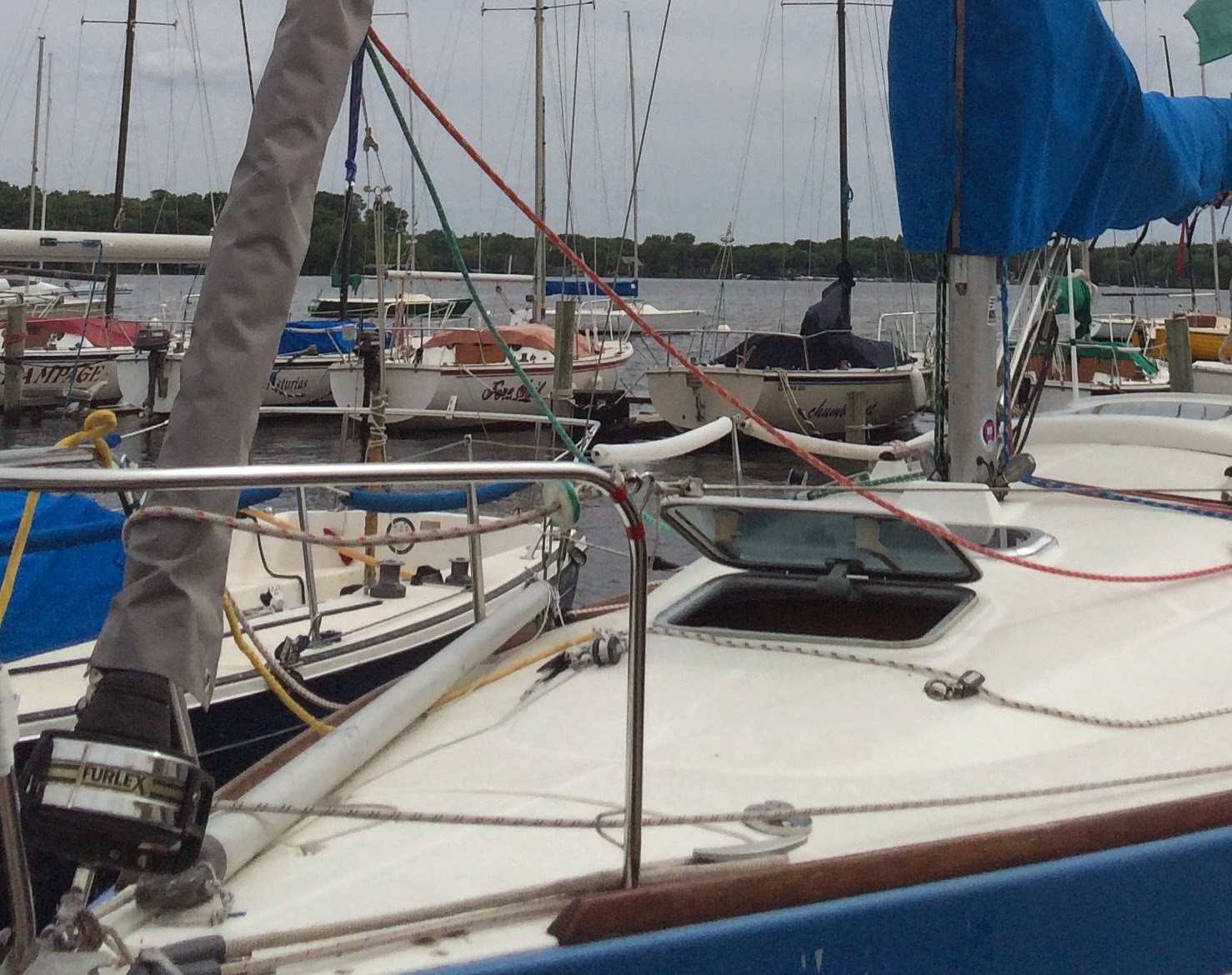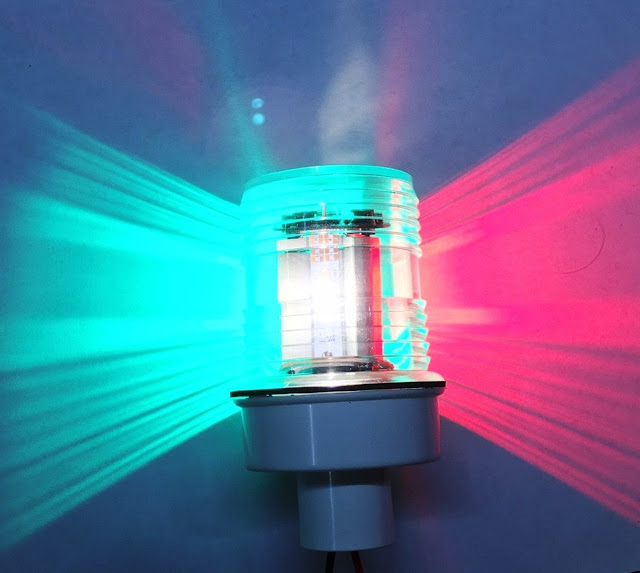Jib sock sail cover
When we went with a set of laminated racing sails for BlueJ, a big question was how to protect the roller furling jib from UV. Left uncovered, the sun would soon destroy the sail. From a practical perspective, there were three options:
- Cover the luff and foot with UV-resistant acrylic (sunbrella)
- Cover the luff and foot with UV-resistant Dacron (stickyback)
- Buy a removable jib sock
Option 1 and 2 are very similar, and are often seen on cruising sails. The only difference is the material. The Sunbrella is much longer lasting, but also much heavier and thicker. The stickyback Dacron tape is lighter and effects sail-shape less, but does not last as long, and is also only available in white.
And both materials have a hidden down-side. The 'hinge' created at the inboard edge of the cover flexes the sail material constantly along that edge, weakening it over time.
An additional down-side is that either would need to be added to any headsail we bought, and as of now we have two racing jibs, as well as our cruising sails.
The third option is becoming more and more popular, and is seen on almost every new j/70. A removable jib sock. This is the way we went, and here's the story.
It was pretty clear that I didn't want the extra weight and shape distorting cloth on the sail, and the prospect of paying for that UV protection on every sail we had made seemed silly. The lightweight dacron sticky-back might have been better, but I didn't like the thought of all that white cloth on the black sails. So the research into jib socks began.
The anatomy of a jib sock
A jib sock is really a long rectangle of UV resistant fabric, with a VERY long zipper down the long ends that makes it into a tube. Often more than one zipper has to be used, as there is a limit to how long they make zippers. On the lower end is a pass-through for your sheets. At the short ends are brass eyes to hold it down and the tack, and to pull it up on your spinnaker halyard.
Shopping and market research
For the 33 foot sock needed for a First 260, I found prices ranging from US$250 to over US$500. I discounted the very low cost one as being inferior quality, and also the top-end one and having not enough differentiation from the middle to make it worth the price.
Beyond length, you have two options:
First you have to decide if you want a shock-cord based system to tighten the roll and keep it from flapping in breeze. Unless your sock fits your sail perfectly/tightly, this is a must have. In a big breeze a flapping shock will shake the entire boat.
Then you have to choose a width, which is a function of the diameter of your rolled up sail. Too small and you have a tight fit, too big and it flaps, even with a tightening cord. We chose 14 inches and have been happy with that.
In the end, I chose a sock from Lee Sailcovers. The price was very reasonable, and we had our choice of colors. the unit was built, shipped, and delivered in less than ten days. I chose a sand color, as I didn't want the typical blue for the jib, and wanted something that could stand up to dirt and grime. Lee Sailcover's web site is HERE.
In practice, putting the cover on is easy. You attach the spin halyard to the top end, and start zipping as you pull the halyard up. This can be done by one person if your spin halyard can be turned forward on a deck mounted block or winch. Lee also includes some special zipper lube to make the zipper open and close more smoothly, a nice touch. They have a video showing the install on their site.
When off, you stow it just like your mainsail cover. It's worth noting that it has substantial weight and bulk; I'm glad that cloth is not flown around all the time on our jib! And it looks great to boot.





Comments
Post a Comment